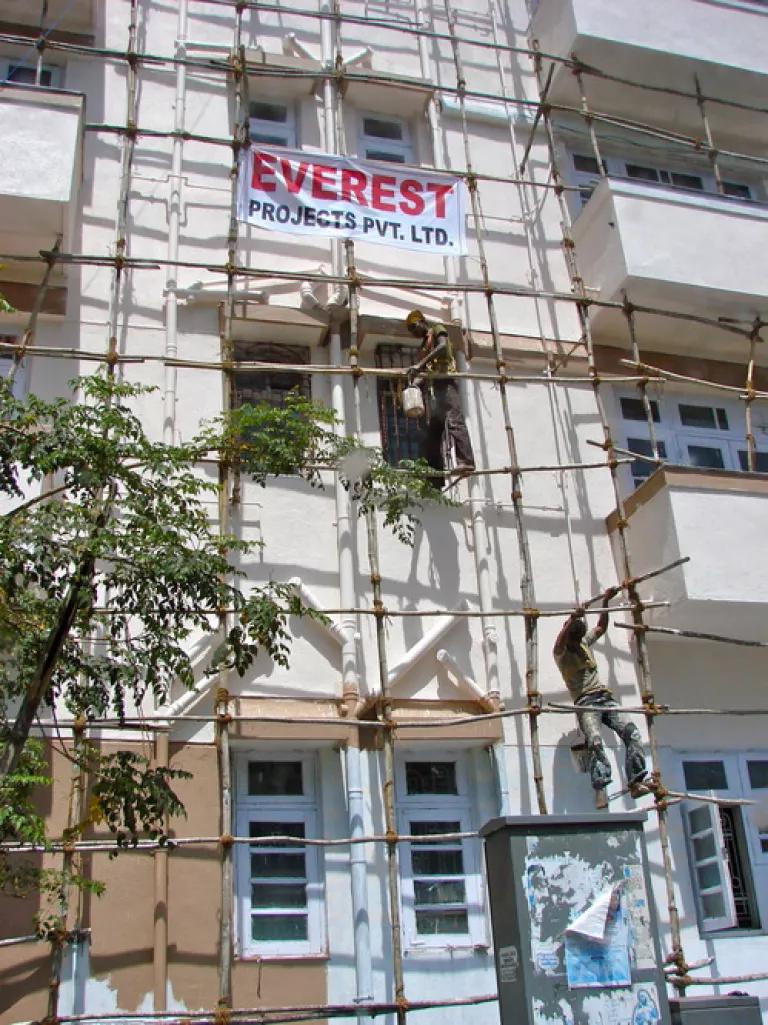New Report: Building Efficiency Incentives and Strong Codes Form Cornerstone to Greener, More Energy-Secure Indian Cities

Today in Delhi, my colleague Dr. David Goldstein and I discussed increasing building efficiency in India’s states at a high-level meeting held by the Planning Commission, Ministry of Power, Bureau of Energy Efficiency and key state leaders. As Dr. Montek Singh Ahluwalia, Deputy Chairman of the Planning Commission said, the roundtable discussion of policies to motivate the construction of more energy efficient buildings was incredibly timely – including the international best practices discussion from China, the United States and elsewhere. The discussion also followed last Friday’s launch and the ensuing buzz about the commission’s new web-based tool, which projects that India’s energy demand could more than double by 2027.
To overcome common barriers to building green, our latest report, Greener Construction Saves Money: Incentives for Energy Efficient Buildings Across India, released today, presents solutions and incentives to enable Indian developers to take advantage of energy efficiency’s significant savings and the benefits of constructing more sustainable buildings. A central theme of our report, which was reiterated at today’s roundtable meeting, is the primary role of state initiatives and mandates in accelerating the adoption of energy efficient measures in buildings across India’s cities.
India’s continued economic development depends on providing more affordable, clean and reliable energy and lessening the strain on current supplies, presenting an opportunity to real estate developers who can lock in energy and cost savings by building green. In addition to reducing dependence on energy imports and increasing energy security, shifting the market to achieve higher levels of energy efficiency could offer an incredible payback for India as a whole.
NRDC and ASCI have also conducted an ECBC energy savings analysis from 2014 to 2030 that reinforces the new Planning Commission’s “India Energy Security Scenarios 2047.” The NRDC-ASCI expands on the Planning Commission analysis by including savings from not just the envelope but also, heating, ventilation, and air-conditioning, and lighting under the ECBC. Our analysis shows, if states across India adopted stronger building efficiency codes and developers participated in strong programs for rating commercial buildings, an estimated 3,453 terawatt-hours of cumulative electricity could be saved by 2030. This is equivalent to powering as many as 358 million Indian homes cumulatively between 2014 and 2030 based on current annual consumption levels for electrified homes. Additionally, the energy savings would be a huge benefit in the fight against climate change, since 1,184 million tons of CO2 emissions could be avoided by 2030, equivalent to the annual emissions from more than 17 coal-fired power plants over the same period of time.
Barriers to Building Green
Despite the compelling need to curb India’s rising energy demand as skyrocketing urbanization occurs across its cities, developers cite common obstacles to building green and locking in energy savings. Incorporating energy efficient measures may require high upfront costs and create split incentives between the developers paying for them and the tenants who enjoy the future lowered energy bills. Furthermore, a general lack of awareness about the benefits of energy efficiency still permeates the market. For example, many developers are unaware that efficiency can literally pay for itself due to the short payback periods on investments. Finally, without effective monitoring and verification after construction, building owners lack confidence that incorporated efficiency measures are saving the projected level of energy and money.

Scaffolding-covered buildings are a common sight and small indicator of the dramatic urbanization occurring across India’s cities (Mumbai, Maharashtra, India). Photo by Meredith Connolly.
Incentives and Motivations to Accelerate Efficient Construction
Our newly-released issue brief, co-authored with our partner, the Administrative Staff College of India (ASCI) and supported in part by Shakti Sustainable Energy Foundation, lays out available incentives and opportunities to help developers overcome these common barriers to building green.
Cities and states across India offer motivations and incentives to build more efficiently, including property tax rebates, the creation of special economic zones and expedited permit processes.
Respected building ratings programs, such as certification by the Green Rating for Integrated Habitat Assessment (GRIHA) and Leadership in Energy & Environmental Design India (LEED India), can also increase property values and motivate developers to achieve higher efficiency certifications.
Creative incentives such as increased floor space index allowances are also being developed to encourage greener construction and participation in these ratings programs. Many states in India have limits on the floor space index (FSI), a measure of the built-up floor area of a building relative to the size of the plot it is built on. To incentivize developers to build green, a portion of this extra FSI may be given to developers of efficient or green-certified buildings for no cost, increasing the value of their properties.
Energy Service Companies (ESCOs)—entities that may pay for energy efficiency investments upfront and recover the costs through surcharges on future energy savings—also offer a compelling model to potentially support the financing and scaling of efficiency upgrades.
Minimum efficiency building codes can also lock in energy savings and avoid costly retrofits. The Bureau of Energy Efficiency developed the Energy Conservation Building Code (ECBC) to reduce energy demand in India’s rapidly expanding cities. The most recent state to adopt a comprehensive adaptation of the ECBC is Andhra Pradesh and its high-tech hub of Hyderabad. A prominent feature of the Andhra Pradesh approach to implementation is a compliance framework that collaborates with developers and experts (as I recently discussed here).
As we make clear in our report, government officials—from central to state and local levels—can and should work with real estate developers to develop further policy and regulatory incentives and effective compliance mechanisms to shift India’s buildings market toward cost-saving, energy efficient buildings. At this critical juncture in the expansion of Indian cities, our hope is that this report will shine light on mechanisms and motivations to lock in energy savings for decades to come.
Co-authored by Meredith Connolly, NRDC Energy Law & Policy Fellow
